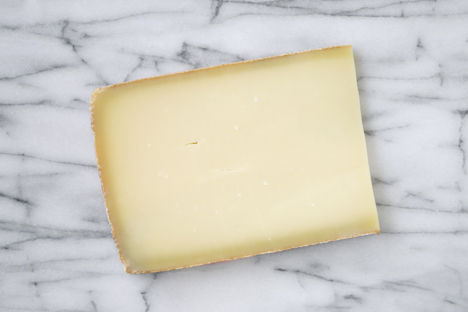
Le Gruyère AOP: the world’s most versatile cheese
Melting, grating, baking, shaving – Le Gruyère is an incredibly versatile cheese that’s particularly good for cooking with. We take a look at the many different ways you can use this AOP-protected Swiss classic.
Le Gruyère AOP: the world’s most versatile cheese
Melting, grating, baking, shaving – Le Gruyère is an incredibly versatile cheese that’s particularly good for cooking with. We take a look at the many different ways you can use this AOP-protected Swiss classic.
Le Gruyère AOP has been delighting gourmands since the twelfth century, and it’s still made to the same traditional recipe today. But while it’s a common sight on any good cheeseboard, the firm, nutty, sweet cheese is also an important ingredient in traditional Swiss and French cuisine – and many of today’s top chefs use it to add an intense, savoury, umami-rich flavour into more contemporary dishes.
The texture of Gruyère also means it melts very well, where other cheeses can split and become greasy when heated. This means it can be used not only for grating over dishes, but as the base for sauces, incorporated into bakes, or even just as the star ingredient for a deliciously rich and luxurious meal. Take a look at some of our favourite Gruyère recipes below, all of which showcase just how versatile this time-honoured Swiss cheese can be.
Gruyère as the star of the show
Because Le Gruyère has been made for so many centuries, chefs have had plenty of time to experiment and play around with it in the kitchen. The result? Some world-famous dishes which are all about celebrating the cheese’s flavour and incredible texture when melted. The most famous has to be fondue – a dish which is having a bit of a comeback since its heyday at 1970s dinner parties. An entire pot of gently bubbling melted Gruyère, loosened with white wine, ready to be used as a dip for potatoes, vegetables and meats. To really appreciate Gruyère’s melting qualities, however, you can’t do better than a Croque Monsieur – France’s famous take on the toasted cheese sandwich which shows just oozy and moreish lashings of Gruyère can be.
Gruyère in sauces
Because it won’t split when melted, Gruyère can be effortlessly incorporated into rich, creamy sauces. Using it as the base for a mac and cheese or simply melting it into milk for a simple yet highly effective more liquid sauce is an easy way to add bags of flavour to a dish. Try this lobster mac and cheese for a seriously luxurious take on the classic – the Gruyère has enough nutty sweetness to complement the lobster meat beautifully – or for something more robust, this gratin takes the humble turnip and makes it shine thanks to a dairy-rich sauce of butter, milk, cream and Gruyère, which is then baked until bubbling and browned on top.
Gruyère in baking
Grated Gruyère can be mixed into doughs easily; just a little sprinkling will add a subtle savoury depth to pastry and bread, while adding more will create dishes brimming with the beloved flavour of the cheese. These gougeres are easy to make, puffing up in the oven to become bite-sized pillows of pure Gruyère goodness. For something with even more wow-factor, try your hand at a soufflé; just a small amount of cheese is all it takes to create a seriously impressive starter that encompasses everything great about traditional French cookery.
Gruyère to finish a dish
Like almost every other cheese, Gruyère can also be simply grated or shaved over the top of a dish right before eating. Think of it like a seasoning – it can do the job of salt but offers so much more in terms of flavour. It’s a classic accompaniment to traditional French fish soup, gently melting onto the surface of the bowl along with crunchy croutons and silky rouille, and is always a fantastic addition to salads. One of our favourite weekend brunch dishes is this fantastic combination of fried egg, black pudding, crunchy croutons, all brought together with a liberal grating of Gruyère to finish.


